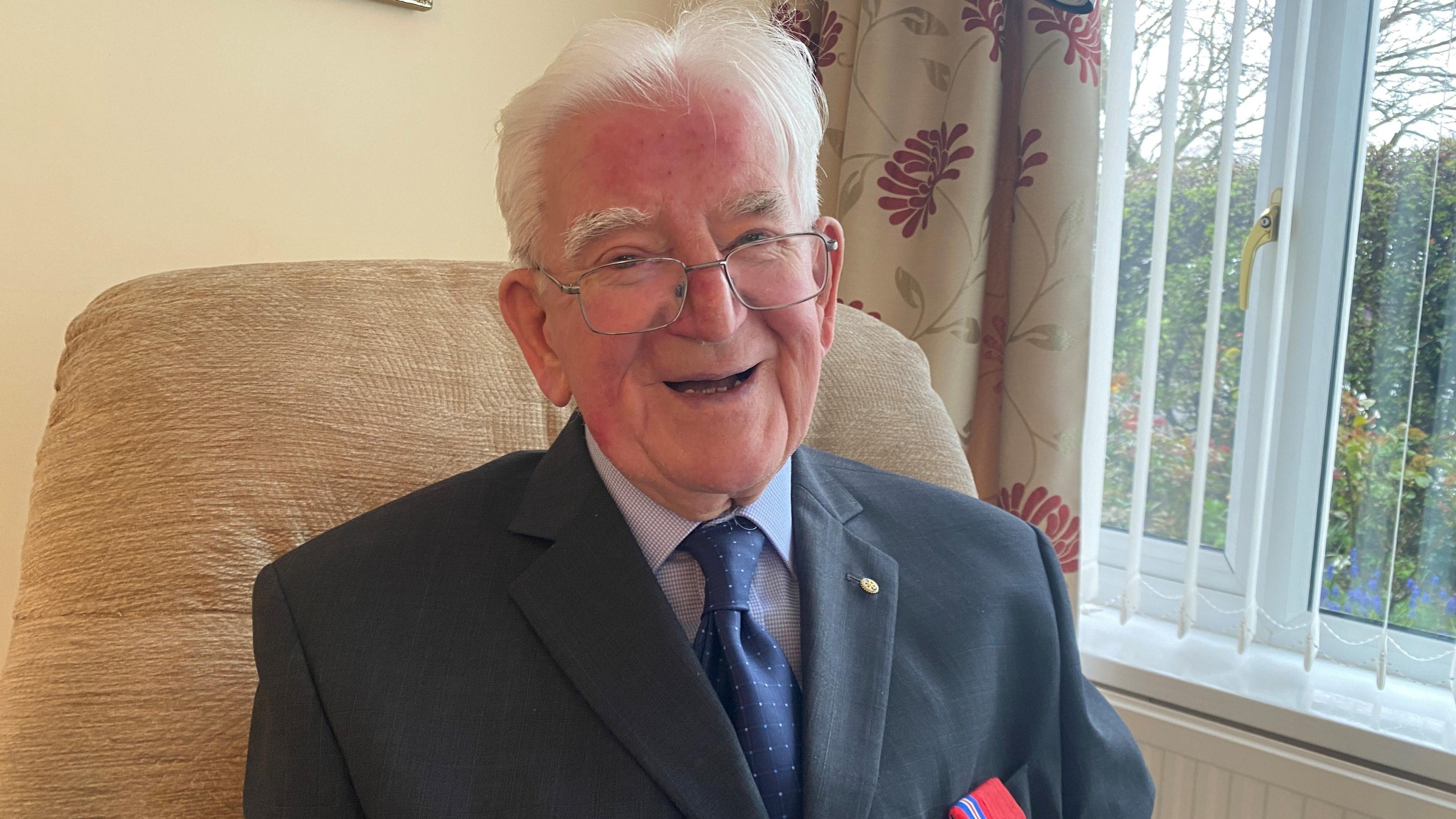When warring troops stopped fighting and shared a picnic
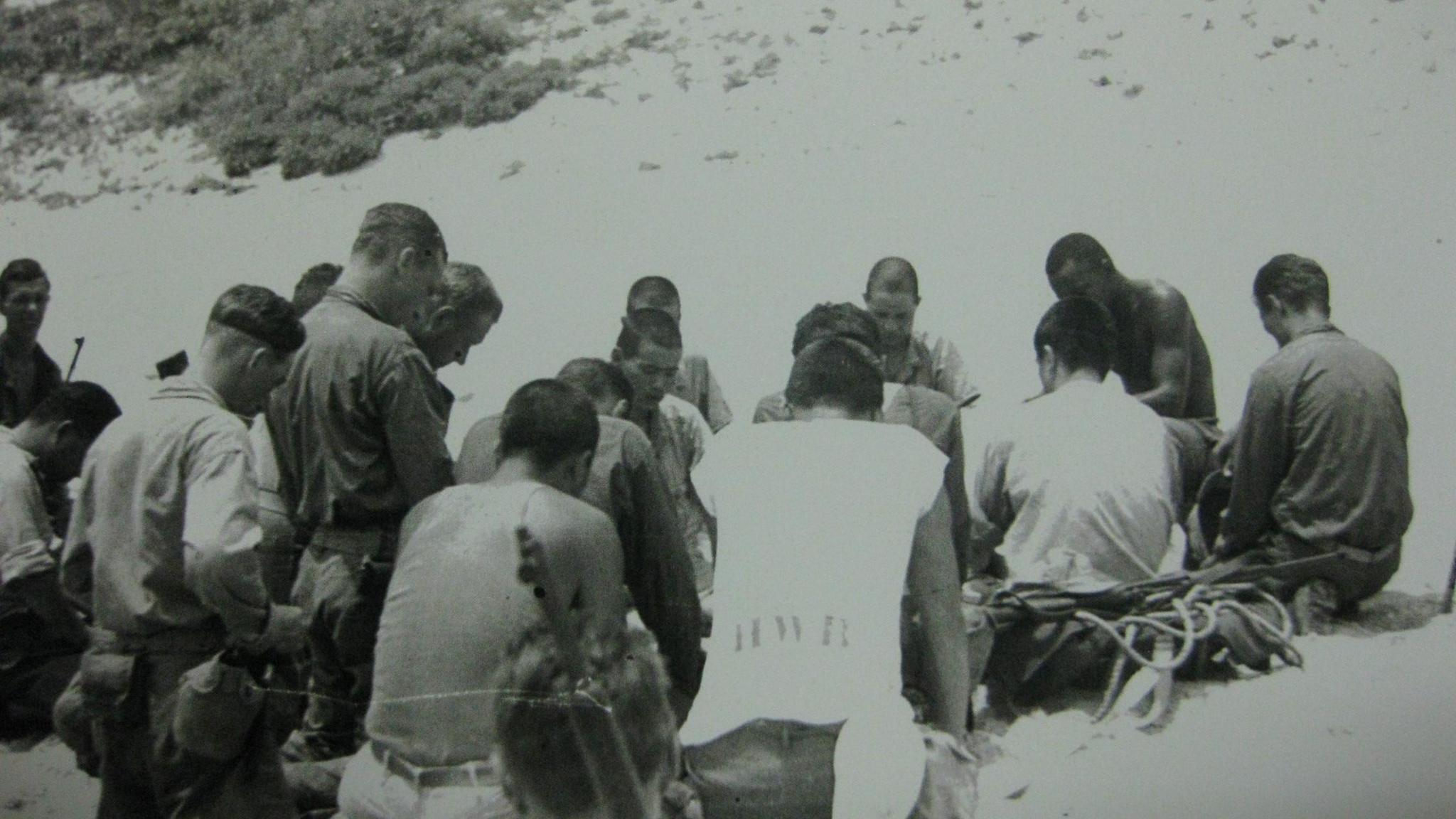
The picnic and prayer truce on Aka island was described in a now declassified report written in July 1945
- Published
A fragile truce near the end of one of the bloodiest land battles of World War Two saw US and Japanese soldiers suspend their fighting and sit down together... for a picnic. According to the Newcastle University professor who helped research it, the event deserves much greater recognition.
"It is just as remarkable as the truce of World War One when British and German soldiers stopped fighting on Christmas Day, perhaps even more so given the hatred and fear between the US and Japanese troops at the time," said political geographer Nick Megoran.
He was part of a team which travelled to an isolated beach on Aka island in Japan to commemorate an event many islanders themselves know little about.
It was there in 1945, in the shadow of the Battle of Okinawa, that US and Japanese troops stopped fighting to talk, eat and pray together.
Prof Megoran said: "Remembrance Sunday 80 years on is a really appropriate time to talk about an incredible moment which has been largely overlooked."
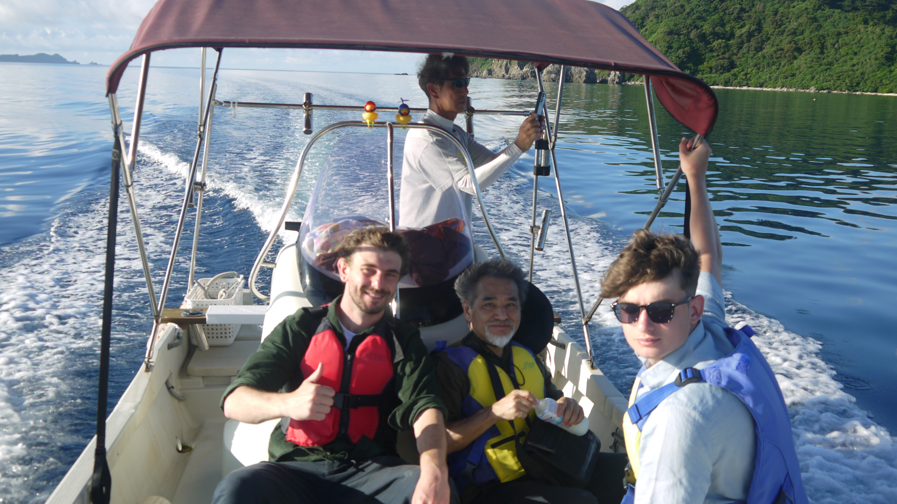
Prof Hiroshi Sakai (centre) heard about the truce during a chance conversation with Aka islanders on a flight
For decades, the event was little known beyond the memories of those who were there.
But in 2004 Japanese University lecturer Hiroshi Sakai, then a newspaper reporter, was sitting on a plane next to an elderly couple who explained they had been children on Aka during the war.
"I asked them if they had endured terrible experiences," he said, but they explained that American and Japanese soldiers had held talks which had led to a state of ceasefire.
Prof Sakai said he had been "astonished".
"Even though it was the war's final stages, Japanese forces were still mounting desperate resistance at the end of June," he said.
He began his own investigation and, in March 2024, sent an email to Prof Megoran who had published research on the 1914 Christmas truces.
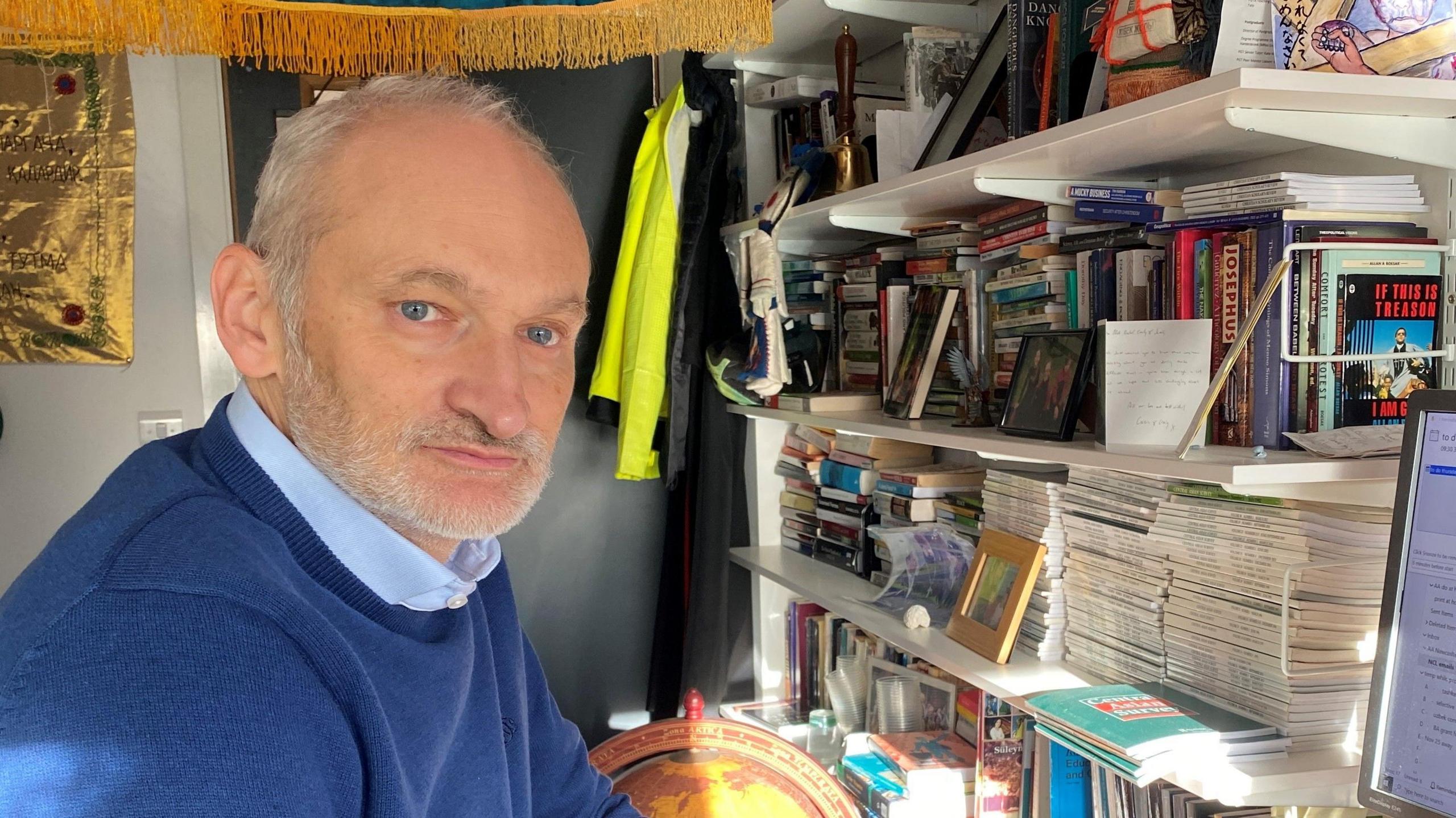
Nick Megoran said he was "spellbound" when he first saw a photograph of the truce
Prof Sakai attached a photograph of Japanese and US soldiers praying together on a beach in June 1945.
"I was spellbound," Prof Megoran said.
"I just sat there looking at it for a very long time and, actually, my eyes welled up with tears.
"In a war when each side dehumanised the other, when civilians took their own lives rather than surrender, for an event like that to take place.
"I just knew this was a story which needed telling."
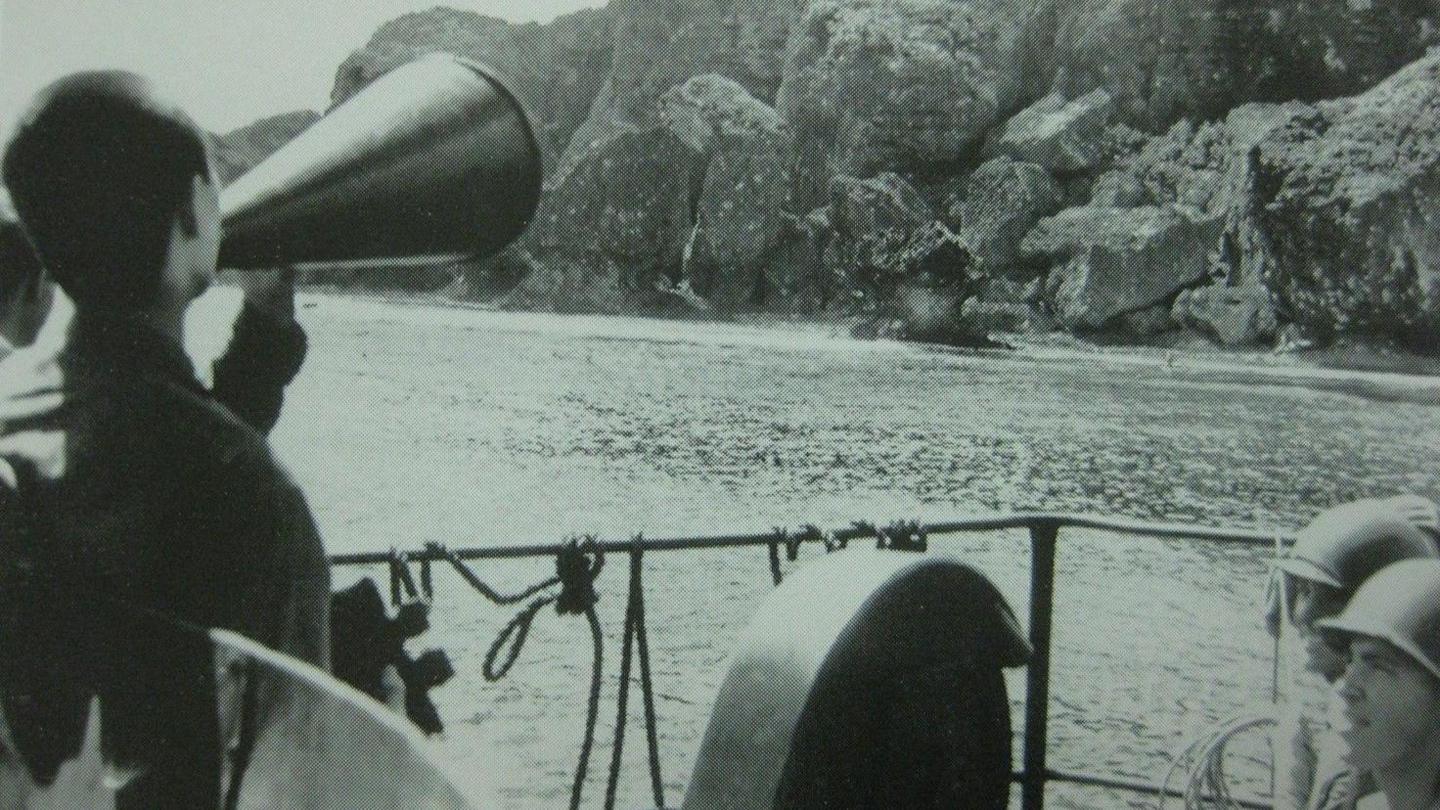
The Americans spent several days circumnavigating the island appealing to the Japanese to surrender
The Battle of Okinawa saw massive casualties on both sides, external, including many civilians.
In June 1945, United States Lt Col George Clark was tasked with securing Aka where a Japanese garrison was based.
He assembled a small team of American officers, along with Japanese prisoners of war who agreed to cooperate in the hope of saving lives.
They spent several days circumnavigating the island, using loudspeakers to broadcast appeals to surrender.

Major Yutaka Umezawa (right), a Japanese PoW, helped build trust between the two sides
The deadlock broke when one of the team, Lt David Osborn, swam ashore and left flags with messages on.
Eventually the garrison commander, Major Yoshihiko Noda, indicated he would be willing to talk but only in the presence of Major Yutaka Umezawa, who had been injured and captured by the Americans.
Trudy Johnson, Lt Col Clark's daughter, said her father and Major Umezawa "had become close".
"One night my Dad talked to him for hours trying to persuade him to help," she said.

Trudy Johnson says her father was proud of what he achieved in 1945
On 26 June, a group of US forces and Major Umezawa landed on the shore, with Japanese soldiers fanned out in the hills above.
"They could have been shot at any time, but my father always said he wasn't afraid," Ms Johnson said.
Instead of bullets, Major Noda appeared.
The two commanders saluted, put down their weapons and began talking. As the negotiations continued, a roast pork lunch was assembled for everyone and they picnicked together on the beach.
In his official report Lt Col Clark described it as "the most amazing spectacle it has been my lot to behold".
The Japanese said they were unable to surrender, but a truce was agreed.
Before the US troops departed, Lt Col Clark asked if the Japanese "would like to join the group in a prayer to the Supreme Being of all faiths for international understanding and peace", led by the US chaplain, which they agreed to do.
The truce held until the Japanese surrender in August and there was no further loss of life on Aka.
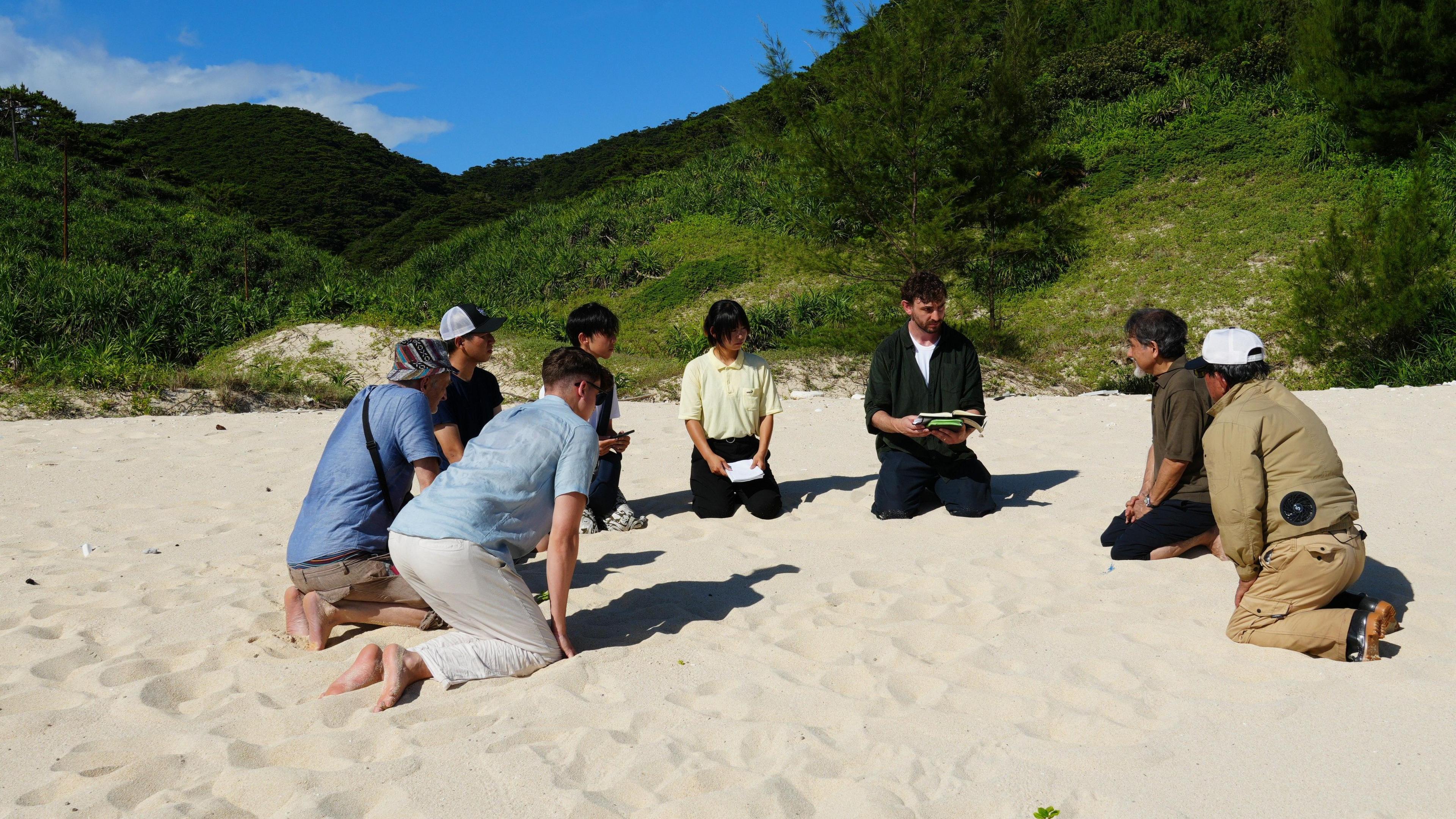
Prayers were held at the spot exactly 80 years on from the original truce
"When we visited in June we interviewed the children of participants and even a civilian eyewitness," Prof Megoran said.
"Younger people on Aka don't know much about the truce but the older people remember."
Pete Alston, from Jesmond Parish Church in Newcastle, led prayers in both English and Japanese at the same spot where the warring soldiers first talked 80 years ago.
"It was such a small event in the midst of so much violence," he said of the picnic in 1945.

Lt Col George Clark never returned to Japan
Ms Johnson, who had kept all her father's photographs from the time, believes the story is not better known because neither side were following orders.
The US soldiers failed to secure a surrender and the Japanese soldiers negotiated with the enemy.
Prof Sakai agrees and added: "For the former Japanese military, an unauthorised negotiation constituted an extremely grave breach of military discipline."
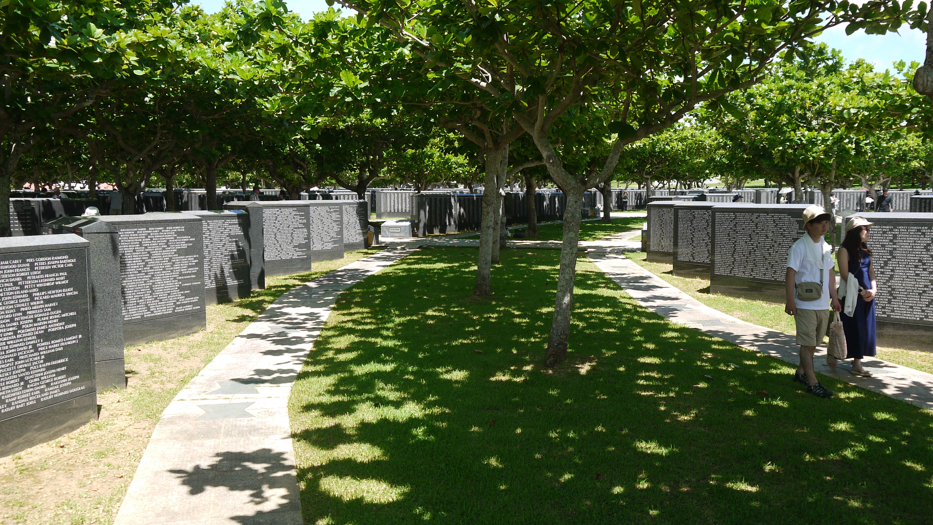
The Cornerstone of Peace Memorial is dedicated to more than 200,000 people who lost their lives during the Battle of Okinawa
Lt Col Clark never returned to Japan, although in 1987 he was interviewed by a Japanese TV channel about his wartime experiences, with his daughter listening in.
"For many years he believed some of the men on the Japanese side had been executed for treason following the truce," Ms Johnson said.
"That's the only time I ever saw my dad cry - when they told him that wasn't true.
"I am an old lady now and I needed someone to pick this up from me, and I'm so glad Nick has come along.
"Of course it was a team effort, there were many brave men involved including the Japanese PoWs who risked their lives by cooperating.
"But my Dad was a good man, he knew what they were doing back then was the right thing."
Follow BBC North East on X, external, Facebook, external, Nextdoor and Instagram, external.
Get in touch
Do you have a story suggestion for BBC Tyne?
Related stories
- Published20 November 2024
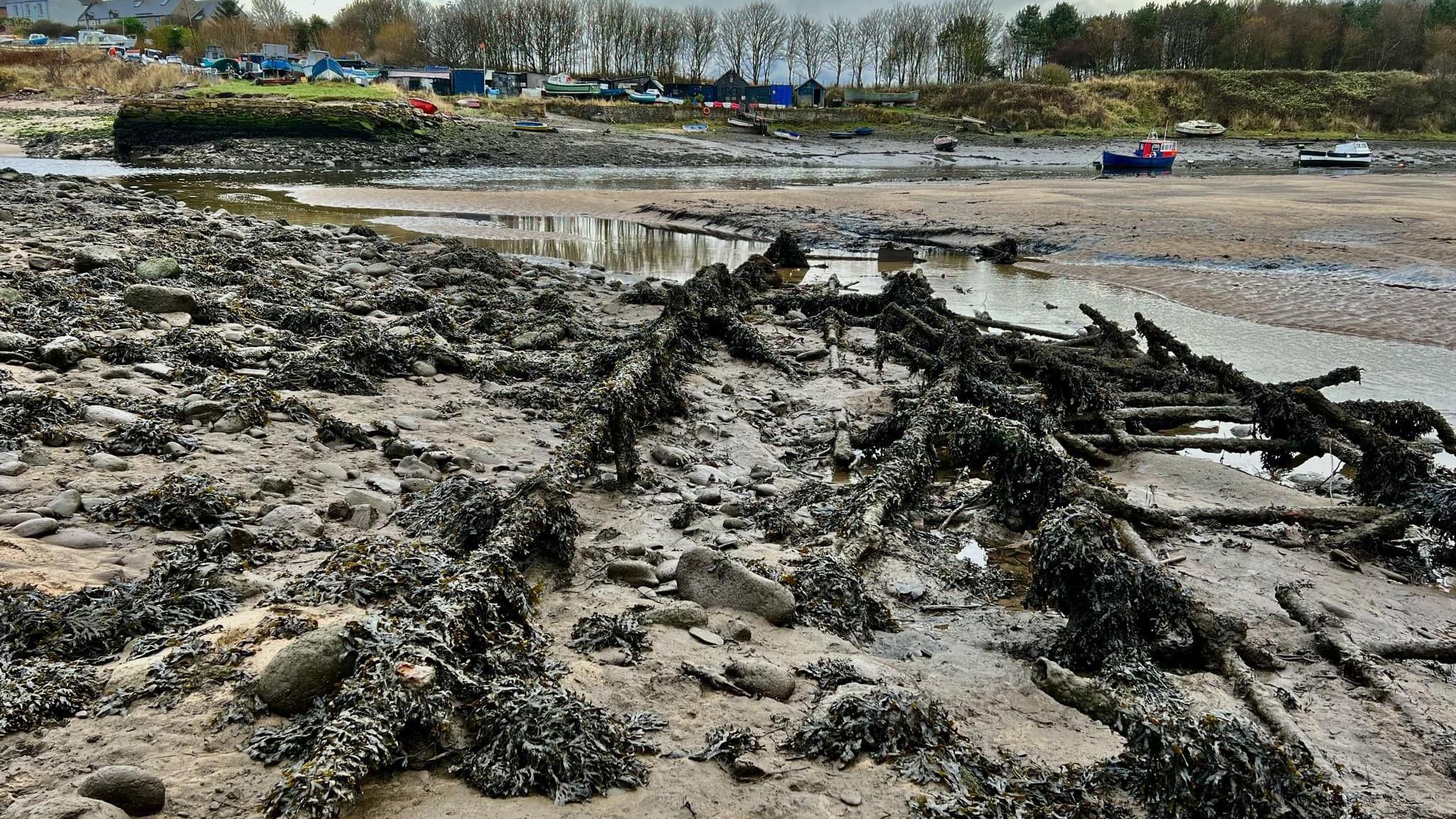
- Published14 December 2024
